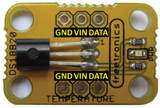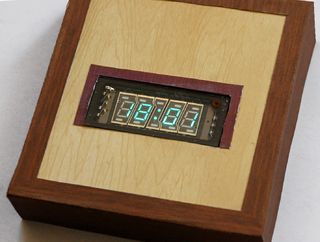Next in the subject of interesting clock projects is "Blinky's Brother" by Paul Swider. This is a neat clock that displays the time with blinks and colours instead of numbers. An RGB LED is used to glow inside a sphere which creates a neat effect and can be also quite mesmerising.

And thanks to the core being an Arduino or compatible board - you can customise the visual effects to suit your needs. For example, reducing the brightness during late hours, or blinking furiously to indicate an alarm.
Either way, for complete details to make your own version - visit Paul's Instructable page. And for more, we're on facebook, twitter and Google+, so follow us for news and product updates as well.
The most important part of any clock project is the inclusion of an accurate real-time clock IC. Here at Freetronics we have the Maxim DS3232 real-time clock IC module:
Apart from keeping accurate time for years due to the temperature-controlled oscillator and having a tiny coin-cell for backup, it is very simple to connect to your Arduino project. A driver library allows your program to easily set or read the time and date. Perfect for clock projects, dataloggers or anything that needs to know the date and time. Furthermore it contains a digital thermometer and 236 bytes of non-volatile memory to store user settings and other data. For more information, check out the module page here.

























